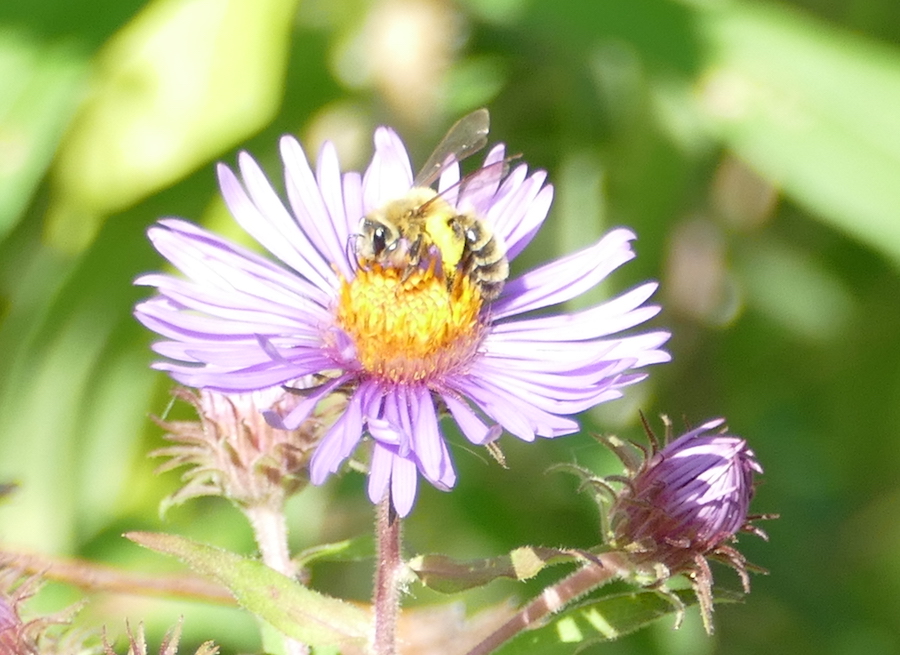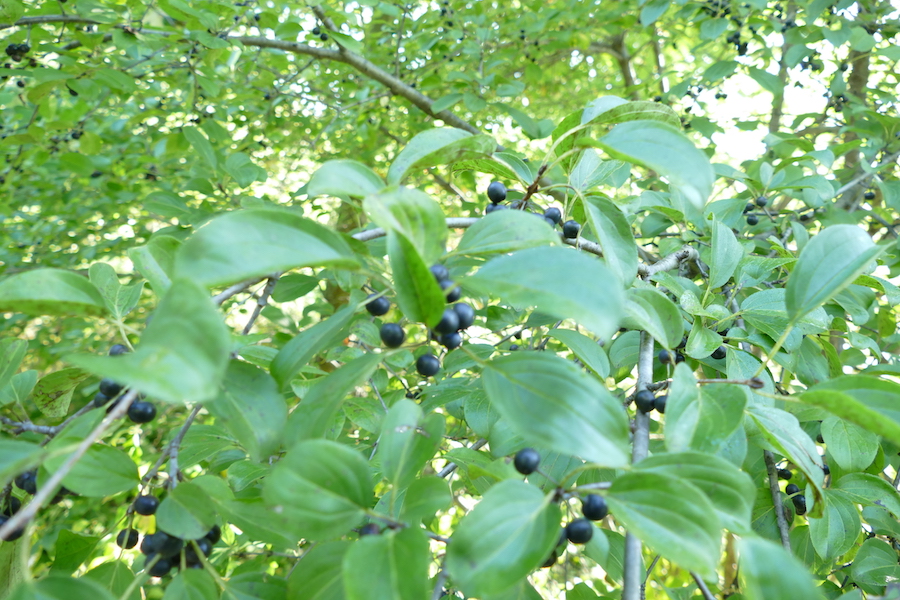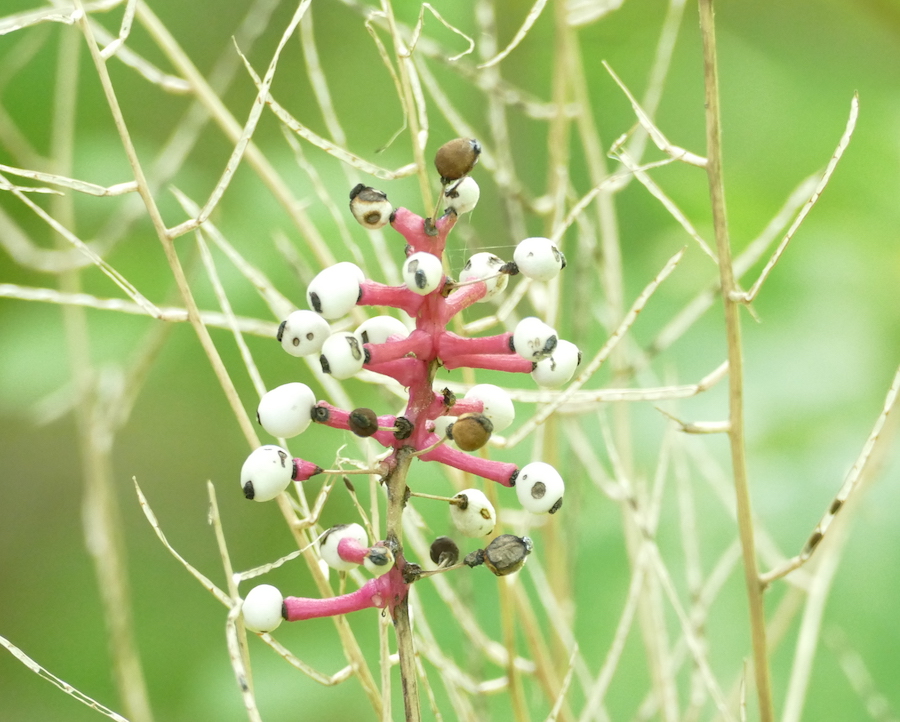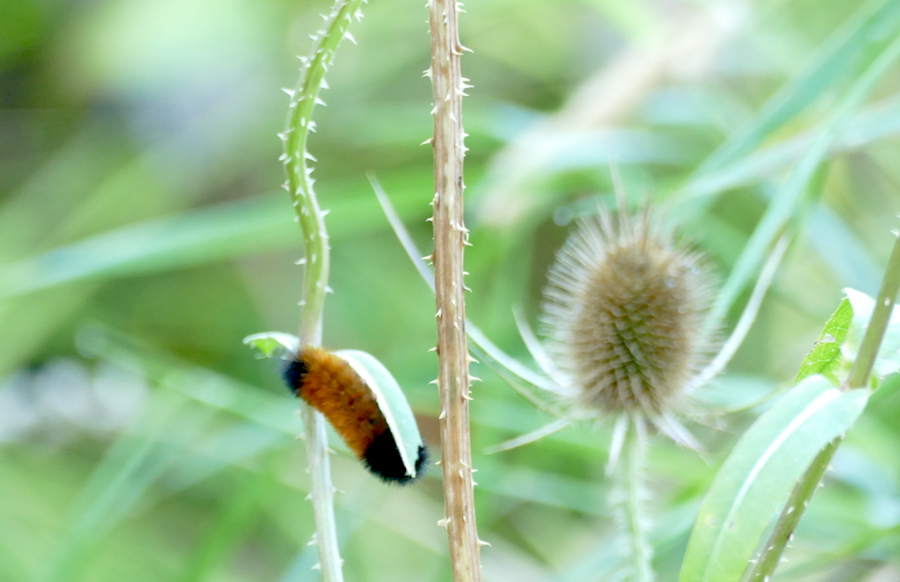For the past couple years, I’ve been participating in the TDSB nature walks let by naturalist Miles Hearn. I’ve learned so much about the natural world around me during that time, all without leaving the Greater Toronto Area. Yesterday I went on the first walk of the fall session. I enjoy this time of year, even though we don’t see nearly so many birds as in spring. Throughout the year, each walk tells its own story, and things often change daily through the seasons.
Yesterday we visited the area of the Don Valley known as Crother’s Woods. Crothers was a company that sold heavy equipment (now called Toromont). It was located in this part of the Don Valley for many years, and as it happened it’s the place Tuffy P’s dad worked for a very long time. In fact, he worked his way up from an entry level position, retiring as a VP. He thought it was very important to stay with a company for a full career if possible and loyalty was a very strong value for him, something I admired very much.


This is the time of year for asters. There are several species in bloom right now, and in the coming weeks, expect to see various different ones in my pictures.


Lots of shrubs are showing off berries right now. One of the more common ones is Buckthorn. In fact, this shrub is considered invasive. The berries don’t look all that much different than the Serviceberries we enjoyed earlier in the summer, but you don’t want to eat Buckthorn berries. The Latin name of the plant is Rhamnus cathartica, and if you eat the berries, you will have an unpleasant and in fact cathartic experience.

On the other hand, Highbush Cranberry produces edible berries. I read that there are different species of them. The native or American Highbush Cranberry apparently produce berries that are tart but tasty while the European Highbush Cranberry produces berries that are bitter and not palatable at all. At this point, if I see one I can identify it as a Highbush Cranberry but I couldn’t tell you which species it is. I suppose doing a taste test is one way to tell. The Highbush Cranberry is not a true cranberry at all. It’s part of the Viburnum group.

Be careful out there if you see berries you think might be good to eat. I photographed the Deadly Nightshade berries above not far from Highbush Cranberry bushes. With plants as well as with mushrooms, it’s important to be very careful to identify things accurately should you plan to eat them. If you aren’t certain, don’t eat it.

Another berry producing plant we saw yesterday was Doll’s Eyes or Baneberry. These area unique and beautiful, but the berries are very poisonous.

Right now there are lots of Woolly Bear caterpillars around in the Toronto area. These become the Isabella Tiger Moth.

When I was growing up, I was always told the Don was a very polluted river. It got that reputation for every good reason, since there was plenty of heavy industry along the river, including a paper mill. Where we walked yesterday, there was once a garbage dump, which has been naturalized over the years. I don’t know what the overall health of the river is like these days, but it’s looking good, and there is a great variety of plant and birdlife along the banks.

My friend Hobie is along on the walks this fall. He spotted this Red-tailed Hawk, sitting atop a pole.

The most common species of bird we saw and heard on the walk was the Goldfinch. There were plenty of them and we could hear them chattering through much of the walk.
Next week, we’ll be walking in the Rouge Urban National Park.

Pingback: Walking in the Don Valley — 27th Street | huggers.ca
Wild berries are too risky.
I eat saskatoons/serviceberries, and wild raspberries and blueberries. As long as I can identify the plant. The same goes for wild mushrooms. There are poisonous ones, but there are lots of good ones too if you can learn to identify them.